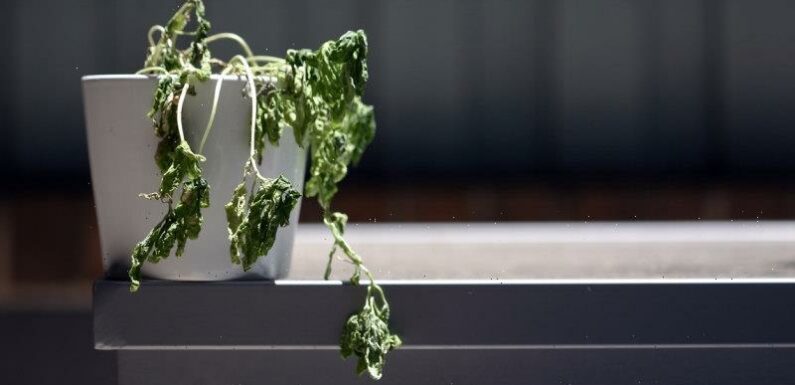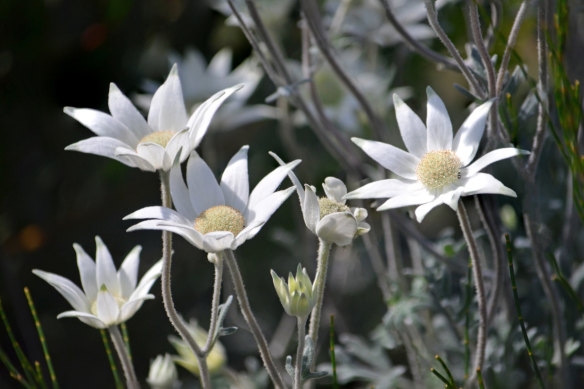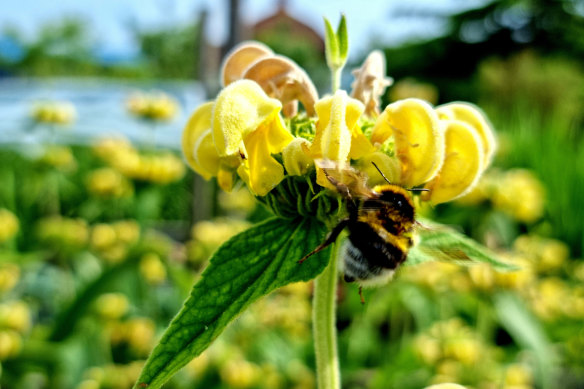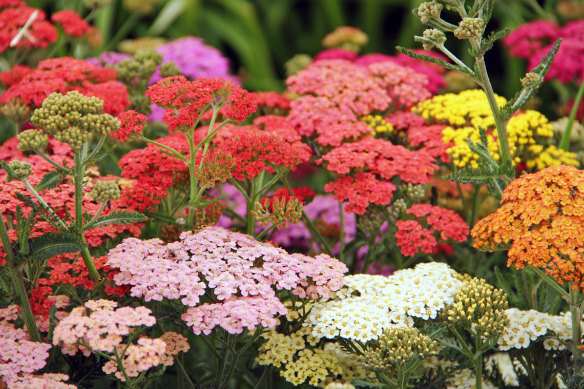
Key points
- Choosing a diversity of plants can help you keep all bases covered no matter the weather.
- Add plenty of organic matter to soil and fashion beds into mounds and banks.
- Planting in containers can help control water flow.
- Add a layer of mulch.
- Keep compost in check by adding “browns” like dried leaves, twigs, wood chips and shredded newspaper.
Just when you thought it was going to be wet and mild forever, the sun came out. With the start of summer looming and with temperatures climbing, there is a lot of gardening to be done, especially if three La Ninas straight have exposed problems with your site.
Boggy soils have been part and parcel of what, in many parts of Victoria, has been a wetter-than-average spring and some soils haven’t dried yet. Some plants haven’t lasted the distance.
As weather patterns get ever more difficult to predict, and rainfall becomes increasingly erratic, selecting the right plants can be something of a balancing act. While some plants – including callistemons and some rushes, sedges, wattles and melaleucas – can handle intermittently wet conditions, others require more consistency.
Choosing a diversity of plants can help you keep all bases covered. If some plants fail to put on a good show in particular years, others can step up to fill the slack. But it also pays to actively improve your drainage and thereby limit the risk of waterlogging even after prolonged downfalls.
Ply your soil with lots of organic matter – everything from compost and leaf mould to a green manure crop and well-rotted manure – and fashion beds into mounds and banks. Even raising the earth just 30cm can improve matters for small plants.
Sand-loving flannel flowers will grow well in pots.Credit:iStock
Planting in containers is another way to control water flow. Plants that have an adversity to soggy soil – such as sand-loving fare like flannel flowers – are well suited to life in a pot. But you will have to keep tabs on them.
All forms of container growing require diligence with your watering. Not only do plants in pots dry out faster, the canopy of some potted plants can shelter the soil from rainfall as surely as the sturdiest umbrella.
The plants might have accommodated this while the weather was cool but they won’t be so forgiving as temperatures rise. If you are in doubt about whether your pot plants are in need of a drink, stick your finger in the soil and, if it feels dry, water.
You have more leeway growing in the ground, and sometimes even bone-dry soil can be left to its own devices. While the recent rains mean most plants are currently looking lush and verdant, it isn’t always like this and the future climate will likely get dryer.
In dry conditions, some growers happily sacrifice the presence of perky foliage – of phlomis and some salvias, for example – in exchange for applying minimal or no water, even through the warmest months. The leaves might wilt, but they will pick up again when rain does fall.
Some species like phlomis will survive with minimal water. Just be prepared for a little less foliage.Credit:iStock
When it comes to growing prolific bloomers like achillea, billy buttons and echinacea, you can also opt to water less but get fewer flowers. Some food growers make a similar trade-off, accepting smaller crops in return for not irrigating as much.
But however much water your plants receive, mulching is always a no-brainer. By using an organic material – woodchips, removed plant material or straw – you’re also paving the way for healthier, more airy soil because the mulch will decompose into it. The more coarse-textured and open the mulch, the deeper you can apply it, but about 10 centimetres should be your limit.
Prolific bloomers like achillea can be watered less in exchange for fewer flowers.Credit:iStock
If you have an abundance of grass clippings, and lots of us do thanks to vigorous spring growth, be cautious applying them over the top of beds because they can form dense carpets that are impenetrable to both air and water. Unless the cut grass is as long as straw – when it makes a great mulch – add it to the compost instead.
You can never have too much compost and if you find your pile is attracting flies or getting smelly in the heat, don’t give up but add more “browns”. These can include dried leaves, twigs, wood chips and shredded newspaper but not coffee grounds, which, despite their colour, are, in compost terms, a green, being rich in nitrogen.
Plant trimmings are also a green, and right now you should be accumulating them fast. It’s the season for clipping hedges, pruning plants (like echiums and euphorbias) that bloomed in late winter and early spring and for deadheading roses to encourage more flowers.
But it is possible to have too much of a floral thing, especially when it comes to volunteer seedlings of enthusiastic self-sowers like scabiosa, valerian and verbascum. Pull the seedlings you don’t want and add them to the compost pile or transplant them elsewhere.
Make the most of your health, relationships, fitness and nutrition with our Live Well newsletter. Get it in your inbox every Monday.
Most Viewed in Lifestyle
From our partners
Source: Read Full Article


